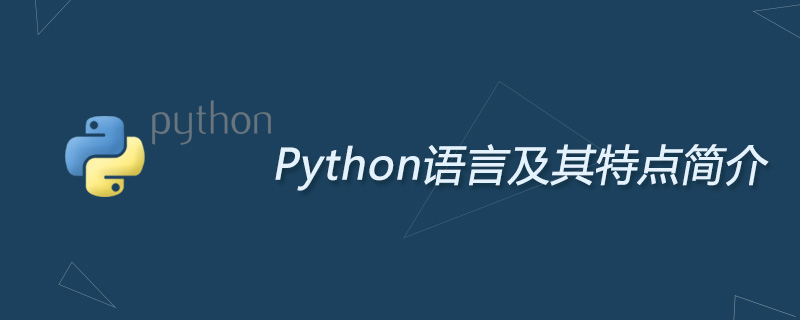

Python by Guido van Rossum Developed in late 1989 for some entertainment purposes, the Python language is based on the ABC teaching language, which is a very powerful language specifically designed for non-professional programmers. However, the ABC language has not been widely used, and Guido believes that it is due to non-openness.
The "origin" of Python partly affects its popularity. Python is very easy to get started, and its syntax is very similar to natural language. For non-software professionals, the cost of choosing Python is the lowest, so some people with medical or even art professional backgrounds People often choose Python as their programming language.
Guido avoids the disadvantage of ABC being not open enough in Python. Guido strengthens the integration of Python with other languages such as C, C and Java. In addition, Python also implements many things that have not been implemented in ABC. These factors have greatly increased the popularity of Python.
In December 2008, Python version 3.0 was released (also often referred to as Python 3000, or simply Py3k). Python 3.0 is a major upgrade. In order to avoid introducing historical baggage, Python 3.0 is not considered compatible with Python 2.x. This has led to Python 2.x users being unwilling to upgrade to Python 3.0 for a long time. This fragmentation once affected the application of Python.
After all, the trend is irresistible, and developers are gradually finding that Python 3.x is simpler and more convenient. Now, most developers have moved from Python 2.x to Python 3.x, but some early Python programs may still use Python 2.x syntax.
In June 2009, Python version 3.1 was released.
In February 2011, Python version 3.2 was released.
In September 2012, Python version 3.3 was released.
In March 2014, Python version 3.4 was released.
In September 2015, Python version 3.5 was released.
In December 2016, Python version 3.6 was released.
......
Currently, due to the popularity of big data and artificial intelligence (AI), Python has become more popular than ever. In the latest TIOBE programming language rankings, Python has quickly risen to 4th place, second only to Java, C, and C. Java occupies most of the world's e-commerce, integration, communications and other server-side application development, while C and C occupy most of the world's hardware programming close to operating systems. The status of these three languages is too difficult to shake.
Characteristics of Python
Python is an object-oriented, interpreted, weakly typed scripting language. It is also a powerful and A complete general-purpose language. Compared with other programming languages (such as Java), Python code is very simple and it is very easy to get started. For example, if we want to complete a certain function, if we use Java, we need 100 lines of code, but if we use Python, we may only need 20 lines of code. This is a major attractive feature of Python.
The two main features of Python are clear syntax and extensibility:
Python's extensibility is reflected in its modules. Python has the richest and most powerful class libraries among scripting languages (these class libraries are figuratively called "batteries included, built-in battery"), these libraries cover most application scenarios such as file I/O, GUI, network programming, database access, text operations, etc. In addition, the Python community is also very developed. Even for some niche application scenarios, Python often has corresponding open source modules to provide solutions.
As an interpreted language, Python is inherently cross-platform. As long as a corresponding Python interpreter is provided for the platform, Python can be used on run on this platform.
Python naturally has some shortcomings of interpreted languages:
The above two questions are actually not big problems. Regarding the first question, since the hardware speed of computers is getting faster and faster, software engineering often pays more attention to the development process. Efficiency and reliability, not the operating efficiency of the software; as for the second question, it is not even a problem. The current trend of the software industry is open source. Just like Java programs, it is also easy to decompile, but it will not affect it at all. Popularity.
The above is the detailed content of Introduction to Python language and its characteristics. For more information, please follow other related articles on the PHP Chinese website!




